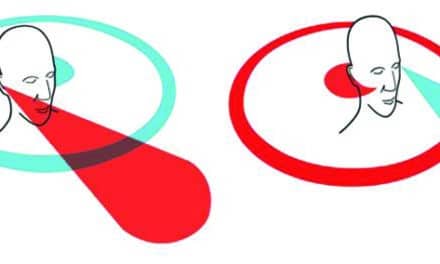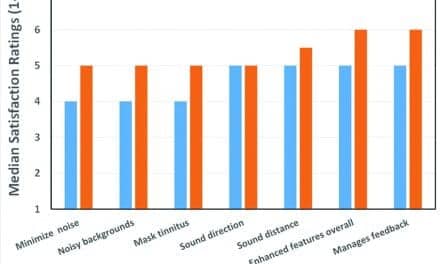Support for universal newborn hearing screening (UNHS) has grown rapidly in the past decade, and recent data indicate that 89.5 % of children born in the United States are now being screened.1 UNHS programs have developed only because there is strong rationale underlying the feasibility and importance of the procedure. That rationale has been affirmed with legislation for mandatory screening in 38 states and the District of Columbia.2
A high rate of screening, however, does not define success in a program. Rather, the screening process has value and justification only to the extent that identified individuals receive appropriate follow-up hearing care services.
In contrast to the considerable achievements in screening newborns, follow-up management remains a significant concern. The Centers for Disease Control and Prevention (CDC)3 estimate that nearly half of referred infants in 2001 did not undergo diagnostic audiologic assessment. Related data from the CDC show that, among infants identified with hearing loss, only 64% were enrolled in intervention services. These two outcomes clearly indicate the need for major improvements in follow-up care.
The current report describes specific elements of a program that has achieved a high degree of success in engaging infants in evaluation follow-up. The report was prepared with the understanding that each newborn program functions with unique limitations and in a unique environment. Nevertheless, commonalities among programs suggest that successful elements of one program may be beneficial to others. The program under review administers UNHS in largely rural settings throughout the State of Wyoming.
A Look at a UNHS Program
Wyoming employs a two-stage ALGO 3 screening process in all of its 21 birthing hospitals: the first screening within 24 hours and the second screening 7-10 days after birth. The proportion of newborns screened (ie, first screening) exceeds 98%. Between 2-3% of newborns fail the first screening and are referred to the second screening. The percentage of newborns referred to diagnostics after the second screening is approximately 0.3% (relative to the total number of first screenings). The efficiency with which referred infants complete a second screening and diagnostic testing has increased over the years of program operation, and with few exceptions follow-up approaches 100%.
Complete assessment of referred infants is especially critical because of the very high risk of hearing loss in this population. The incidence of congenital hearing loss (CHL) in Wyoming is approximately 1:340. In sharp contrast, the incidence of CHL in infants referred after the first screening in Wyoming is 1:10. After a second screening 4 out of every 5 referred infants are found to have CHL.
Thus, for every 10 infants “lost” between the first and second screening, the program has likely lost one hearing-impaired child. If any one child is lost after the second screening, it is likely that the program has lost a hearing-impaired child. Statistics derived from the data of other UNHS programs indicate similar high risk in infants after initial and second screenings.4,5
With limited exceptions, all referred infants in the program during 2002 and 2003 completed proper follow-up screening and audiologic diagnosis. Over this 2-year period, 321 newborns failed screening at birth, and at this writing, 307 (96%) received a second screening. Relative to the original group of 321 infants, 268 (83.5%) passed and 39 (12%) failed follow-up screening.
A total of 14 infants have not yet received a second screening. Eight (2.5%) of these infants are categorized as pending, which indicates that their whereabouts are known and communication with the parent is current, but the test has yet to be completed. Five (1.5%) have moved out of state and beyond reach of the program. In only one case did a parent waive the second screening. Based on probability, 1 or 2 of these 14 children has a hearing loss and attempts are being made to resolve as many cases as possible.
For the same 2-year period, 36 of 39 infants (92%) failing the second screening have undergone audiologic diagnostic testing. Two cases are pending and one child has moved out of state. Based on probability, each of these latter 3 children is presumed to be hearing impaired, and efforts to complete follow-up reflect this concern.
Key Elements
What can we draw from the above? Recapturing infants who do not arrive for follow-up services is no easy task. Rural regions, like Wyoming, face numerous challenges, including those related to low population density, small resource-poor hospitals, and distant access to specialized hearing care. The same demographics, however, create specific opportunities to enhance successful follow-up evaluation. Features that appear to contribute to program efficiency include the following:
• Centralized coordination and tracking. A single coordinator oversees the entire program and communicates personally with major players. Directing the entire program has assisted the coordinator in helping state personnel to understand the program and in garnering their support. Hospital nursing supervisors have met her, most have been trained by her, and they are in regular contact with her. Through this contact, the individuals who supervise follow-up scheduling understand the rationale for their efforts, and they know whom to call if problems occur.
• Continuity. The coordinator tracks every referred child in the state. The continuity provided by centralized tracking is one of the essential elements in program success. A strategy for easy communication across programs, including across state lines, could perhaps reduce the loss of infants who leave the region.
• A relatively small population of newborns. Small numbers of newborns make the program more manageable and child-centered. Any child who fails the screening becomes highly visible at both state and local levels, and the child receives the personal attention of the program to ensure progression to follow-up stages. The program is responsive to a delay or other problem in an individual child’s progress. Data are meaningful because of the personal experience with children that they represent. The small size of the program also lends itself to uniformity. Hospital personnel are trained by the same group of trainers, and they use the same referral criteria, data management, and reporting procedures. Smaller numbers allow a simpler administrative structure, including more efficient tracking of patients and control of data.
• Commitment by major players. Individual commitment of professionals to referred infants is integral to program success. As an example, local Public Health and WIC (Women/Infant/ Children) Nurses readily assume responsibility for locating “lost” children. Rarely is a child not found—even in special circumstances like name change or transient family residence. The dynamics of personal acquaintance and face-to-face communication among professionals and with the coordinator appear to enhance each professional’s personal stake in assisting a child.
• Perseverance. Each referred infant is known to the coordinator, and the program is diligent in completing follow-up.
• Personal contact with the parent. When standard procedures (eg, appointment scheduling, notification letters, etc) do not bring the child to follow-up, the coordinator’s office makes personal contact with the parent. Parent noncompliance often represents lack of appreciation for the importance of follow-up testing, and personal conversation with the parent almost always yields cooperation. The personal phone call is recognized as one of the most important techniques in the program for achieving successful follow-up. It is apparent that, in many cases, letters alone are ineffective.
• Transportation funding. State assistance is available for transportation, and occasionally state personnel (eg, Public Health Nurses) provide transportation. In a few instances follow-up screening has been performed in the home.
Conclusions
In response to the considerable gains in newborn hearing screening, refined follow-up procedures are essential for justification of the screening effort and, more importantly, for proper management of the subset of infants at high risk for hearing loss. The key element is the very high incidence of hearing loss among these children. Data suggests that just over half of referred infants complete follow-up diagnostic assessment. It is critical that programs take the next step by ensuring follow-up services.
Is efficient follow-up feasible? The success of selected individual programs3 and evidence that follow-up efficiency improves over successive years of program development4-6 suggest that it is. Nevertheless, limited success thus far indicates that programs need to expedite improvement with increased focus on follow-up procedures, development of resources, innovations in management, and sharing of strategies.
Features of successful follow-up in one program were presented in this article. These features probably relate best to other smaller, rural programs. To some extent, the demonstrated success of this program provides evidence in support of such smaller programs with centralized organization. Despite the difficulties that must be overcome in this setting, it could be argued that smaller numbers offer key advantages in retaining and recapturing referred infants. Small size itself does not yield efficiency, but it may allow committed personnel better opportunities to accomplish their objectives. The potential advantages of managing smaller program units for follow-up care may suggest a possible target of resource development to increase program efficiency.
Additional strategies for achieving effective follow-up have been outlined by NIDCD Working Groups.2,7
References
1. World Council on Hearing Health. Newborn Hearing Screening State Report Card. 2004; Available at: www.wchh.com/programs/docs/2004_state_report_card.pdf; Accessed September 22, 2004.
2. National Institute on Deafness and Other Communication Disorders (NIDCD). When a Newborn Doesn’t Pass the Hearing Screening (NIH Publication No. 04-5490). August 2003; Available at: http://www.nidcd.nih.gov/health/hearing/professionals.asp; AccessedAugust 20, 2004.
3. Centers for Disease Control and Prevention. Infants tested for hearing loss — United States, 1999-2001. Morbidity and Mortality Weekly Report, 52(41); October 17, 2003: 981-984. Available at: http://www.cdc.gov/mmwr/preview/mmwrhtml/mm5241a1.htm. Accessed August 12, 2004.
4. Finitzo T, Albright K, O’Neal J. The newborn with hearing loss: Detection in the nursery. Pediatrics. 1998; 102(6):1452-1460.
5. Mehl AL, Thomson V. The Colorado newborn hearing screening project, 1992-1999: On the threshold of effective population-based universal newborn hearing screening. Pediatrics 2002; [Electronic version] 109(1): e7.
6. Prieve B, Dalzell L, Berg A, Bradley M, Cacace A, Campbell D, et al. The New York State universal newborn hearing screening demonstration project: Outpatient outcome measures. Ear Hear. 2000; 21(2):104-117.
7. National Institute on Deafness and Other Communication Disorders (NIDCD). Communicating the Need for Follow-up to Improve Outcomes of Newborn Hearing Screening. July 2001; Available at: http://www.nidcd.nih.gov/funding/programs/hb/hearingreport.pdf; Accessed October 26, 2004.
Correspondence can be addressed to HR or Michael A. Primus, Division of Communication Disorders, University of Wyoming, Dept. 3311, 1000 E. University Ave, Laramie, WY 82071; email: [email protected].




